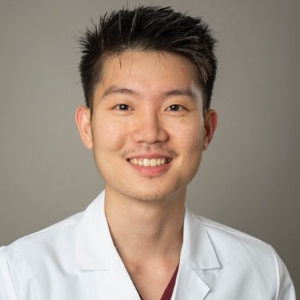Title : An unexpected twist under the microscope: Schistosomiasis masquerading as endometriosis
Abstract:
Introduction: Schistosomiasis is a parasitic infection endemic to Asia, Africa, and South America, and can be an unusual cause of pelvic pain in women. Due to similar symptoms with endometriosis, the diagnosis is often missed in regions of the world where Schistosomiasis is uncommon. We present a rare situation with longstanding schistosomiasis due to a misdiagnosis and delayed treatment.
Case Presentation: A 24-year-old woman presented with chronic pelvic pain, dysmenorrhea, and dyspareunia. She had no prior history of sexually transmitted infections. She had no fever, urinary symptoms, irregular menstrual cycles, vaginal bleeding or discharge. Her pelvic exam was notable for tenderness on the right uterosacral ligament with a 1-2 cm nodule. Diagnostic laparoscopy revealed a small amount of endometrial implants on the anterior cul-de-sac, which was cauterized. She was then prescribed oral contraceptives. However, her pelvic pain persisted for several months. Pelvic MRI was normal without any findings of endometriosis. A second laparoscopy demonstrated an enlarged uterus and endometriotic tissues on the colonic serosa associated with surrounding fibrosis and scarring. Excised tissues were sent for pathology. Light microscopy of the specimen did not show endometriotic characteristics but a background of granulomatous inflammation interspersed with calcified Schistosoma eggs, later identified as Schistosoma mansoni. Upon reviewing her exposure history, she reported spending two months in Uganda and Rwanda, during which she participated in baptisms in Lake Victoria, about 2 years prior to the onset of symptoms. Notably, she never had eosinophilia but had an elevated Schistosoma IgG level. She was started on a 60mg/kg dose of praziquantel over 24 hours together with a course of oral prednisone. She completed a second dose of praziquantel 4 weeks later. She had two subsequent stool studies which were negative for ova and parasites. Unfortunately, her pelvic pain did not improve.
Discussion: Schistosomiasis is a chronic parasite infection that is not common in the United States. Schistosoma mansoni enters the host via the skin, migrates through blood and settles in mesenteric vessels. It can present as an acute hypersensitivity reaction or a chronic granulomatous inflammation. The prolonged inflammation and fibrotic changes on laparoscopy due to delay in treatment explain why this patient did not improve after laparoscopy and anthelminthic therapy. The diagnosis of schistosomiasis can be made through various approaches including parasite egg-microscopy in urine or stool samples, parasite antigen, or antibody assays. Praziquantel is the preferred treatment option for Schistosomiasis with relatively few adverse effects. A second dose is often recommended to kill juvenile worms 3-6 weeks after the initial treatment. Steroids are sometimes added to reduce the risk of complications related to the host inflammatory response.
Conclusion: Due to varying clinical manifestations of the disease, diagnosing schistosomiasis can be difficult or even mistaken for another pathology when it is encountered outside of endemic regions. This case emphasizes the importance of obtaining a comprehensive exposure history in patients with long-standing unexplained pelvic pain.



